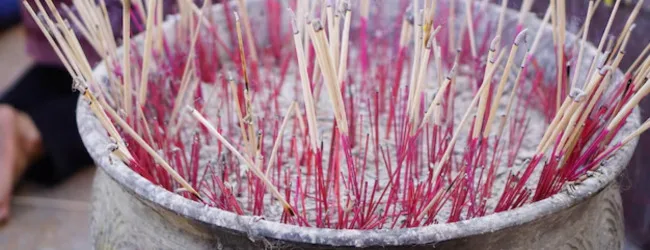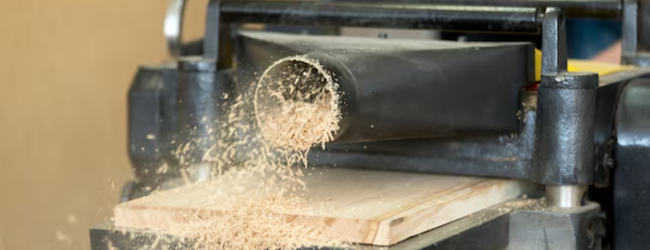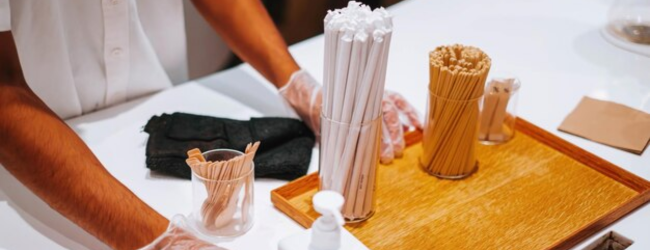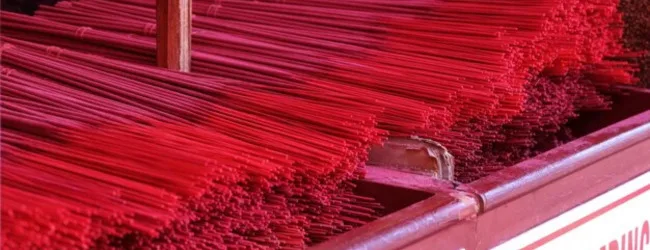Are you looking for a profitable and culturally significant business venture in India? An incense stick manufacturing business offers a compelling opportunity, blending traditional practices with modern market demands. This guide will walk you through the essential steps, from raw materials to profit margins, ensuring you’re well-equipped to embark on this journey.
Why Start an Incense Stick Manufacturing Business?
The incense stick manufacturing business offers a unique blend of cultural significance, market demand, and entrepreneurial opportunity. Here’s a breakdown of the compelling reasons to consider this venture:
- Consistent and Growing Demand:
- Incense sticks are deeply ingrained in Indian culture, used daily for religious ceremonies, spiritual practices, and aromatherapy. This ensures a consistent domestic demand.
- The global market for incense and related products is also expanding, driven by increasing interest in wellness and natural fragrances.
- Festivals and religious events in India create huge spikes in demand.
- Low Startup Costs (Relatively):
- Compared to many manufacturing businesses, incense stick production can be started with a relatively modest investment, especially with manual or semi-automatic machines.
- Raw materials are readily available and often affordable.
- High Profit Margins:
- With efficient production and effective marketing, the business can achieve healthy profit margins, typically ranging from 20% to 40%.
- Value-added products, such as premium fragrances and eco-friendly options, can command higher prices.
- Scalability and Flexibility:
- The business can be easily scaled up or down based on market demand and available resources.
- You can start with a small-scale operation and gradually expand as your business grows.
- You can easily adjust the products that you make based on seasonal demands.
- Cultural Significance and Tradition:
- Incense sticks play a vital role in Indian traditions and religious practices, allowing you to contribute to a culturally significant industry.
- You can create products that resonate with consumers on a deeper, emotional level.
- Export Potential:
- Indian incense sticks are highly regarded for their quality and fragrance, creating significant export opportunities to various countries.
- The growing global interest in aromatherapy and natural products further enhances export potential.
- Employment Generation:
- The incense stick manufacturing business can provide employment opportunities, particularly in rural areas, contributing to local economic development.
- Use of Natural and Sustainable Materials:
- There is a growing demand for naturally made products. This business can easily adapt to this demand.
- Bamboo is a sustainable and fast-growing plant.
- E-commerce growth:
- Selling online allows for a much broader customer base and allows for ease of order taking and fulfillment.
8 Simple Steps to Start Incense Stick Manufacturing Business

1. In-Depth Market Research and Planning
- Niche Market Identification:
- Beyond general categories, explore specific niches:
- Aromatherapy: Focus on essential oil-based incense for relaxation and wellness.
- Spiritual/Religious: Cater to specific religious practices with traditional scents.
- Export-Oriented: Target international markets with unique fragrance blends and packaging.
- Eco-Friendly/Organic: Produce incense with natural, sustainable materials.
- Consumer Behavior Analysis:
- Understand regional preferences for scents and packaging.
- Analyse purchasing patterns (bulk vs. retail, online vs. offline).
- Identify emerging trends (e.g., natural fragrances, sustainable packaging).
- Beyond general categories, explore specific niches:
- Competitive Analysis:
- Map out key competitors, including local manufacturers and established brands.
- Analyse their pricing strategies, distribution channels, and marketing efforts.
- Identify gaps in the market and opportunities for differentiation.
- SWOT Analysis: Conduct a SWOT (Strengths, Weaknesses, Opportunities, Threats) analysis of your potential business.
- Financial Planning:
- Develop detailed financial projections, including startup costs, operating expenses, and revenue forecasts.
- Explore funding options, such as bank loans, government grants, or angel investors.
- Create a break-even analysis to determine the volume of sales required to cover costs.
2. Detailed Raw Material Sourcing and Quality Control
- Bamboo Sticks:
- Source from reputable suppliers who offer consistent quality and dimensions.
- Consider the type of bamboo (e.g., thin, thick, split) based on your product specifications.
- Implement quality checks for straightness, smoothness, and moisture content.
- Charcoal Powder:
- Ensure the powder is finely ground and free from impurities.
- Test for burning properties and ash content.
- Consider different types of charcoal; some burn slower than others.
- Jigat Powder:
- Source high-quality jigat powder with good binding properties.
- Test for viscosity and consistency.
- Fragrance Oils/Essential Oils:
- Select oils from reputable suppliers who offer pure and concentrated fragrances.
- Conduct fragrance testing to ensure consistency and quality.
- Consider using natural essential oils for premium products.
- Herbs and Spices:
- Source fresh and high-quality herbs and spices.
- Ensure proper storage to maintain their aroma and potency.
- Coloring Agents:
- Use food-grade or natural coloring agents to avoid any health risks.
3. Machinery and Equipment: Detailed Specifications

- Incense Stick-Making Machines:
- Manual: Suitable for small-scale production; requires manual feeding and operation.
- Semi-Automatic: Offers increased production capacity with automated feeding and coating.
- Automatic: High-capacity machines with automated feeding, coating, and cutting.
- Specify the production capacity (sticks/minute), power consumption, and maintenance requirements.
- Mixing Machines:
- Choose a mixer with sufficient capacity to handle the batch size.
- Ensure uniform mixing for consistent product quality.
- Drying Equipment:
- Drying Racks: Cost-effective for small-scale operations.
- Drying Chambers/Machines: Offer faster and more controlled drying, reducing drying time and mold risk.
- Control humidity and temperature for optimal drying.
- Packaging Machines:
- Select machines suitable for your packaging materials (e.g., pouches, boxes).
- Consider automated sealing and labeling machines for efficiency.
- Quality Control Equipment:
- Scales, moisture meters, and burn time testing equipment.
4. Detailed Setup Cost Breakdown
- Land and Building:
- Rental deposits, lease agreements, or purchase costs.
- Renovation or modification costs for production and storage.
- Machinery and Equipment:
- Purchase costs, installation fees, and maintenance contracts.
- Raw Materials:
- Initial inventory costs, including safety stock.
- Transportation and storage costs.
- Licenses and Permits:
- Application fees, legal fees, and compliance costs.
- Working Capital:
- Salaries, utilities, marketing expenses, and other operating costs.
- Emergency funds.
- Contingency Fund: Set aside money for unexpected expenses.
5. Enhanced Manufacturing Process
- Material Preparation:
- Sieving and grinding raw materials for uniform consistency.
- Pre-treat bamboo sticks to improve coating adhesion.
- Mixing and Blending:
- Precise measurement of ingredients for consistent quality.
- Controlled mixing time and speed to ensure uniform distribution.
- Coating and Shaping:
- Adjusting machine settings for desired thickness and shape.
- Ensuring uniform coating for consistent burning.
- Fragrance Application:
- Applying fragrance oils at the optimal stage to maximize aroma retention.
- Use sprayers or dipping methods.
- Drying and Curing:
- Controlled drying to prevent cracking and warping.
- Curing to enhance fragrance and burning properties.
- Quality Control:
- Regular inspections for size, shape, fragrance, and burning properties.
- Batch testing for consistency.
6. Profit Margin Optimization

- Cost Reduction:
- Negotiating favorable prices with suppliers.
- Improving production efficiency to reduce waste.
- Optimizing packaging and transportation costs.
- Value Addition:
- Developing unique fragrance blends and product variations.
- Offering premium packaging and branding.
- Providing customised products for specific customers.
- Pricing Strategy:
- Implementing competitive pricing based on market analysis.
- Offering volume discounts to attract bulk buyers.
- Sales Channel Diversification:
- E-commerce, export, retail, wholesale, and direct sales.
7. Detailed Licensing and Regulations
- BIS Certification: Understand the specific BIS standards for incense sticks.
- Export Documentation: If exporting, learn about required certificates of origin and other export-related documentation.
- Labor Laws: Ensure compliance with labor laws regarding wages, working hours, and safety.
- Fire Safety Regulations: Incense stick production involves flammable materials, so adhere to fire safety regulations.
8. Advanced Marketing and Distribution
- Digital Marketing:
- Search engine optimization (SEO) for online visibility.
- Social media marketing to engage with target audiences.
- E-commerce platforms for online sales.
- Branding and Packaging:
- Develop a strong brand identity with a unique logo and packaging design.
- Use high-quality packaging materials to enhance product presentation.
- Distribution Channels:
- Build relationships with retailers, wholesalers, and distributors.
- Explore partnerships with e-commerce platforms and export agents.
- Consider creating your own online store.
- Customer Relationship Management (CRM):
- Implement CRM software to manage customer interactions and track sales.
- Gather customer feedback to improve products and services.
Conclusion

Starting an incense stick manufacturing business in India presents a promising opportunity. By understanding the market, sourcing quality raw materials, investing in the right machinery, and developing a robust marketing strategy, you can build a successful and profitable venture. Remember to comply with all regulatory requirements and focus on delivering high-quality products to establish a strong brand presence.
Frequently Asked Questions (FAQs)
What is the initial investment required to start an incense stick manufacturing business?
- The initial investment can range from ₹1,00,000 to ₹10,00,000 or more, depending on the scale of operation and the type of machinery used.
What are the key raw materials required for incense stick manufacturing?
- Bamboo sticks, charcoal powder, jigat powder, fragrance oils, and coloring agents.
What type of machinery is needed for incense stick production?
- Incense stick-making machine, mixing machine, drying racks/machines, and packaging machines.
What is the average profit margin in the incense stick business?
- The average profit margin is typically between 20% and 40%.
What licenses and permits are required to start this business in India?
- Business registration, GST registration, trade license, and pollution control certificates (if applicable).
Where can I sell my incense sticks?
- You can sell to retailers, wholesalers, online platforms, religious institutions, and export markets.
How can I ensure the quality of my incense sticks?
- Use high-quality raw materials, maintain proper manufacturing processes, and conduct regular quality checks.
What are the best marketing strategies for an incense stick business?
- Online marketing, offline marketing, participation in trade shows, and building a strong brand.


